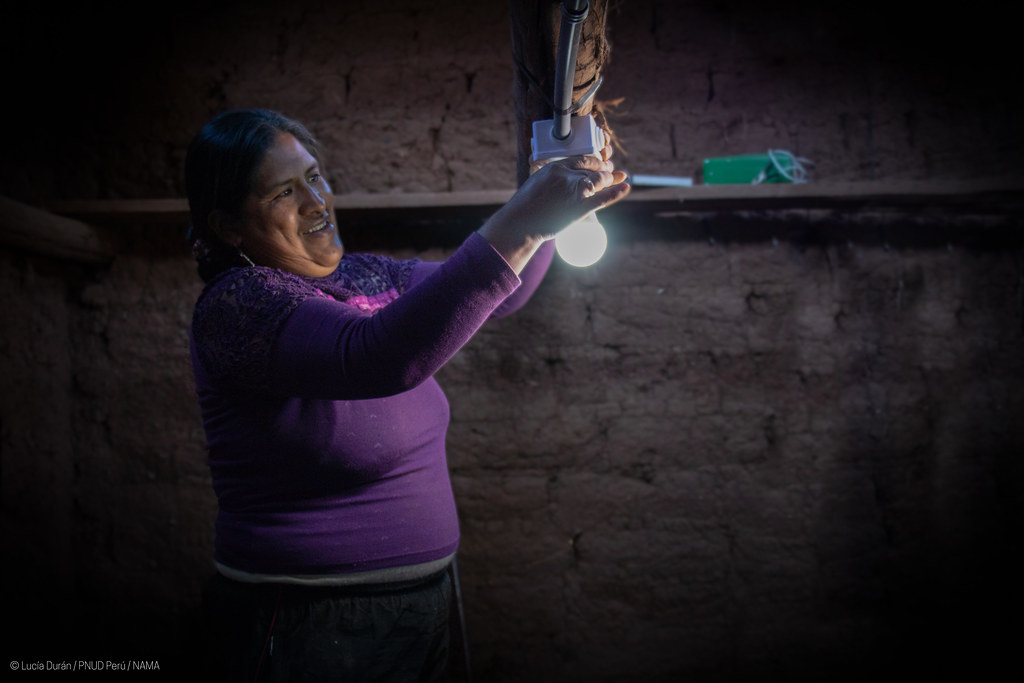Gina Lucarelli, UNDP Accelerator Labs Team Leader, explains.
What are grassroots energy innovations, and why do they matter?
March 13, 2023

To ensure everyone has access to reliable, affordable, sustainable energy we need to think differently, be more inclusive and work collectively. The UNDP Accelerator Labs and the UNDP Sustainable Energy Hub, with support from the Honey Bee Network and Columbia University’s School of International and Public Affairs, have joined forces to launch #PeoplePowered, a new initiative to celebrate, source and learn from grassroots innovators and their solutions to advocate for clean energy access for all.
We asked three questions to Gina Lucarelli, UNDP Accelerator Labs Team Leader, to understand what grassroots energy innovations are, and why development organizations should support and learn from them.
1. What are grassroots innovations?
At the UNDP Accelerator Labs, we’ve been looking at grassroots innovation since day one. Grassroots innovators have a particularly unique kind of knowledge as they are solving real problems. When people who are closest to the problem invent solutions that might just be more amenable to scaling faster, it teaches us more about the problems they face.
Grassroots innovations are early-stage, often home-grown solutions led by women and men who innovate in the margins.
Grassroots innovations are early-stage, often home-grown solutions led by women and men who innovate in the margins. They may never have been codified or disseminated beyond their communities. These solutions are naturally frugal, grounded in a specific context and might be more relevant than top-down “solutions,” given their proximity to the problem. There’s even a documentary out there to spread the word on the latent potential of what 8 billion people know, which has just been recognized at SXSW.
2. How do you research and find grassroots energy innovations, and what do they show us?
Over the course of four months, our Network of Labs has sourced 359 grassroots energy solutions from across different regions and energy sources. That’s about 18 solutions coming our way every week! The important point here is not the sheer number, but what we can learn from them to inform how we go about catalyzing access to clean energy at the scale needed to ensure universal access.
Take Nripen Kalita. He invented a zero-head water turbine in India, a low-cost piece of equipment that generates electric energy from moving water while pumping the water for irrigation or other purposes. It’s portable, affordable and it’s more efficient than conventional hydroelectric methods, and was inspired by rural communities like his own who have unreliable energy access. Or sisters Sarah and Deena Mousa, who created a solar-powered water heater that is clean and affordable, with the potential to provide low-income households in Egypt with healthier alternatives to heat their water. Examples like this show us that solutions are out there, ready for support and scaling to make an even greater contribution.
We are trying to see how grassroots innovation contributes to moonshots like the global energy access goal. I’m fascinated by the fact that, from the sample we found, these grassroots energy solutions are mostly open source and at a product stage, instead of just prototypes. This may mean that we are ready to deploy and ready to share solutions that can be tapped into in order to have many small ideas instead of relying on large energy grids that are often out of reach for the last mile. If you are keen to dig into the data we've gathered, you can check out these data visualizations created in partnership with Viz For Social Good, and a group of inspired volunteers.
3. How can grassroots innovations help develop impactful sustainable energy projects?
Within the UNDP Accelerator Lab Network, we are running an experiment at scale, based on the assumption that people living closest to the problems create spontaneous, effective, sustainable solutions. We launched the #PeoplePowered campaign to test out what grassroots innovation can do for initiatives such as UNDP’s bold energy mission.
If we know where to look, we see innovators in the Global South who have found ways to overcome electricity grid gaps.
Grassroots, bottom-up innovations are already providing affordable and accessible energy services to underserved communities. If we know where to look, we see innovators in the Global South who have found ways to overcome electricity grid gaps.
As a Network, we operate on the premise that with 8 billion people on the planet, we probably have many of the answers to current problems—the trick is finding and diffusing them. With #PeoplePowered we are starting, humbly, to ask how many small inventions might be able to take energy access to scale.

 Locations
Locations


